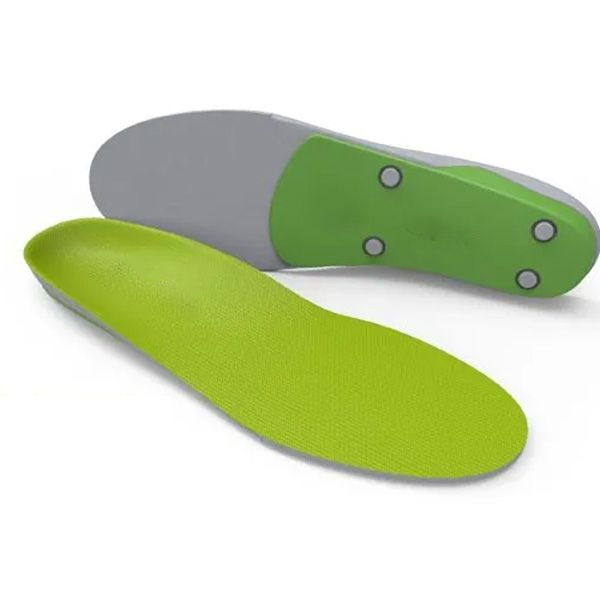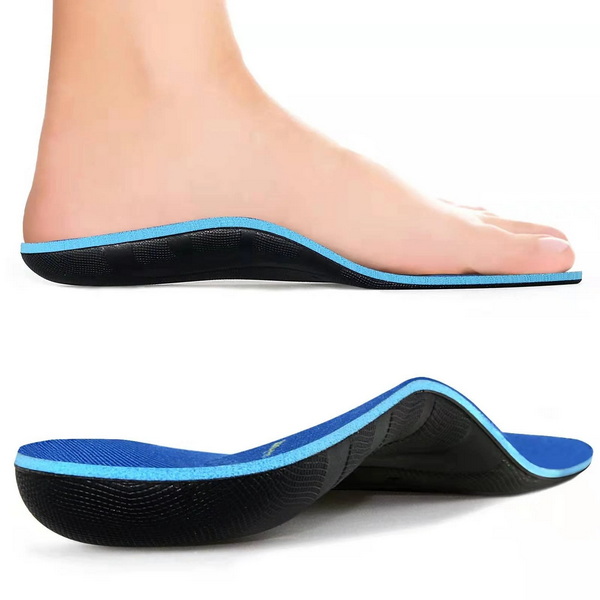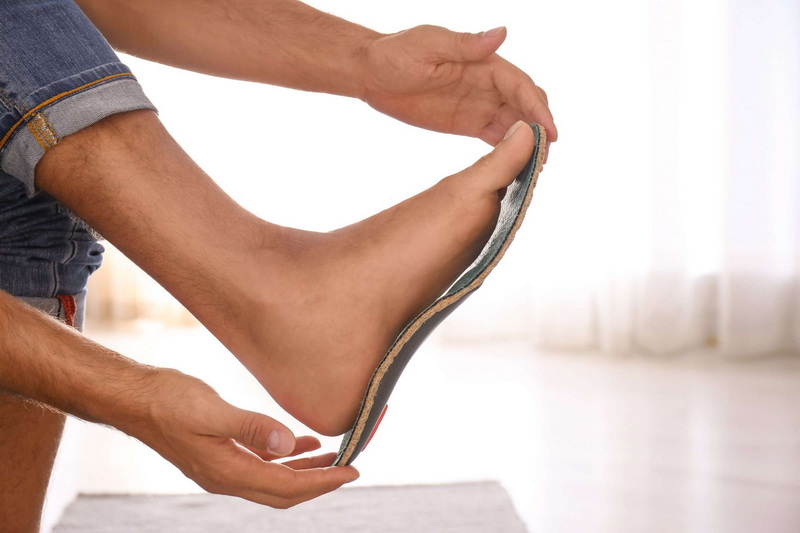Views: 222 Author: Edvo Publish Time: 2025-10-23 Origin: Site











Content Menu
● Why Do You Need Insoles for High Arches?
● Key Features of Insoles for High Arches
● Common Materials Used in High-Arch Insoles
● How to Choose the Right Insoles for High Arches
● Types of Insoles Suitable for High Arches
● How High-Arch Insoles Benefit Your Feet
● OEM EVA Insole Manufacturing in China
● Advantages of Partnering with Chinese Insole Manufacturers
● Customization Process for High-Arch Insoles
● Care and Maintenance Tips for High-Arch Insoles
● Common Misunderstandings About Arch Insoles
● Signs It's Time to Replace Your Insoles
● Challenges Users Face Without Proper Insoles
● The Future of Insole Design for High Arches
● FAQs About Insoles for High Arches
>> 1. What causes high arches?
>> 2. Do high arch insoles fit all shoe types?
>> 3. How often should I replace my insoles?
>> 4. Are custom insoles better than ready-made ones?
>> 5. Can high arch insoles help with knee or back pain?
Finding the right insole can make an enormous difference for people with high arches. Without proper support, your feet may experience strain, discomfort, or even chronic pain. Fortunately, specialized insoles designed for high arches can solve these problems by distributing pressure, improving alignment, and increasing comfort in every step.
This article explores everything you need to know about arch insoles — from their design and materials to their benefits, selection tips, manufacturing insights, and OEM opportunities for international brands.

High arches, also known medically as pes cavus, occur when the arch of the foot is raised more than normal. Unlike flat feet, which over-pronate, high-arched feet under-pronate or roll outward. This means the heel and forefoot absorb most of the impact, leaving the midfoot with minimal contact.
Common symptoms include:
- Pain in the heel, forefoot, or arch
- Frequent ankle sprains due to instability
- Calluses beneath the ball of the foot
- Difficulty balancing or walking on uneven surfaces
- Soreness after standing for long periods
Without proper cushioning, these symptoms can intensify, particularly for athletes or workers who spend many hours on their feet.
People with high arches often have poor shock absorption and uneven pressure distribution. Regular shoe insoles are too flat to support this curvature, leading to fatigue and pain. Insoles designed for high arches provide strategic support and cushioning to restore balance.
Key benefits:
- Even weight distribution across the foot
- Better stability and improved posture
- Reduction in ankle, knee, and back strain
- Enhanced walking or running performance
- Greater comfort during prolonged standing
Proper high-arch insoles can transform uncomfortable shoes into supportive footwear, relieving pain and improving endurance.
When purchasing insoles, pay attention to features specifically engineered for heightened arches:
1. Deep Heel Cup: Stabilizes the heel and promotes correct foot positioning.
2. Firm Arch Support: Prevents the foot from collapsing inward or outward.
3. Shock-Absorbing Forefoot Cushion: Protects the ball of the foot from pressure buildup.
4. Breathable Fabric: Enhances airflow, preventing odor and moisture accumulation.
5. Contoured Shape: Mirrors the natural curve of the foot for better alignment.
6. Energy Return Layers: Improve rebound during walking or running.
Manufacturers often use multi-layer construction combining EVA foam, gel pads, and TPU stabilizers for durability and comfort.
EVA Foam: Soft, lightweight material that cushions effectively while offering mild structural support. Ideal for athletic shoes and daily wear.
PU Foam: Firmer than EVA, providing enhanced resilience and longer life for work or hiking shoes.
Gel Inserts: Target high-pressure zones for additional comfort, ideal for people experiencing metatarsalgia or heel pain.
Memory Foam: Adjusts to individual foot shapes, offering custom comfort though with less long-term structure.
TPU Support Shells: Added under the arch or heel to maintain firmness, ideal for performance footwear.
Each material serves a unique purpose, and combining several adds both stability and flexibility to the insole design.

Choosing the right insoles depends on personal needs and usage scenarios. Here's what you should consider:
- Arch Height: If your arch is very pronounced, select an insole labeled “high” or extra-high.
- Activity Type: For running or sports, opt for insoles offering both shock absorption and responsive energy return.
- Shoe Compatibility: Make sure your insoles fit seamlessly inside your footwear without causing tightness.
- Foot Flexibility: If your foot is rigid, more cushioning is necessary; for flexible feet, focus on stability.
- Durability Needs: Daily users should consider insoles with PU or reinforced TPU materials.
Trying the insole inside your shoe before purchase ensures the heel and arch align naturally with your foot.
Cushion-Focused Insoles: Soft, thick padding aimed at relieving heel and ball pressure. Suitable for all-day standing or walking.
Supportive Orthotic Insoles: Designed for medical-grade alignment. These include firm arch reinforcements for structural correction.
Performance Sport Insoles: Reinforced TPU base with breathable top layers to enhance movement efficiency. Commonly used in running or training shoes.
Custom Molded Insoles: Tailored using 3D scanning to match the user's foot anatomy. Often used by professional athletes or individuals with chronic pain.
Hybrid EVA–Gel Insoles: Blend the comfort of EVA foam with the resilience of gel layers to maintain long-term padding integrity.
The main function of these insoles is to support your arch and restore the natural alignment of your lower limbs. This has widespread biomechanical benefits:
- Reduces muscle fatigue by stabilizing the foot
- Minimizes impact force during walking or running
- Alleviates stress on the Achilles tendon and calves
- Improves foot alignment to prevent pronation-related injuries
- Enhances comfort and reduces overall foot fatigue
By evenly distributing pressure, high arch insoles prevent one area — especially the heel — from absorbing all the shock, which is crucial for long-term foot health.
As one of the leading EVA insole manufacturers in China, our company provides full OEM and ODM services for global shoe brands, wholesalers, and medical product suppliers. With advanced molding and lamination equipment, we produce a wide range of insole types including athletic, orthotic, and memory foam models.
Our capabilities include:
- Custom arch height and shape design
- Multi-layer EVA foam compression molding
- Precision laser cutting and anti-slip top covers
- Gel and air-cushion integration for comfort
- Logo printing and retail packaging
Global buyers trust Chinese suppliers thanks to their strong cost-efficiency, automated production processes, and commitment to consistent quality control.
- Scalable Capacity: Easily handle small MOQ to mass production orders.
- Custom Engineering: Tailor molds, material density, and dimensions for specific foot types.
- Efficient Production: Utilize advanced CNC and thermo-molding for precise consistency.
- Fast Lead Time: Streamlined logistics for international shipments.
- OEM/ODM Flexibility: Designed to support brand identity and private labeling.
For footwear brands targeting sports, medical, or casual markets, partnering with a professional Chinese manufacturer ensures both quality and cost competitiveness.
1. Foot Scan and Data Collection: Advanced 3D scanners record arch height and foot curvature.
2. Prototype Development: Engineers design custom molds and density layers for proper support.
3. Trial Testing: Samples undergo comfort and compression resistance evaluations.
4. Mass Production: Approved designs move to assembly lines with integrated quality inspections.
5. Packaging and Export: Completed products are packed and shipped to global distribution centers.
This full OEM process allows brands to create high-performance customized insoles that meet the specific ergonomic needs of high-arched users.
To maintain durability and hygiene:
- Remove insoles regularly and air dry after use.
- Clean with mild soap and lukewarm water only.
- Never expose to direct sunlight or heat dryers.
- Replace insoles every six months or once worn down.
- Store in a cool, ventilated environment.
Regular maintenance helps maintain shape integrity, prolonging both cushioning and support properties.
1. Soft Equals Better: Soft cushioning feels comfortable initially but collapses under weight. High-arch feet need firm, supportive materials.
2. All Arch Supports Are the Same: Insoles vary greatly in height, curvature, and stability.
3. Custom Insoles Are Only for Athletes: Anyone with foot arch issues benefits from tailored support.
4. High Arches Don't Need Support: Even high arches require balance — without it, shock absorption becomes poor and injuries more likely.
Correcting these misconceptions helps users make smarter purchasing decisions for lasting foot health.
Even the best insoles lose function over time. Watch for:
- Flattened padding or cracked foam
- Persistent foot discomfort despite use
- Noticeable odor or moisture buildup
- Misalignment of arch area
Typically, replace insoles every 6 to 12 months depending on frequency of wear and weight load.
Without adequate arch support:
- The heel and forefoot endure excessive load leading to pain.
- Foot imbalance affects knee and back posture.
- Runners lose energy efficiency due to uneven gait cycles.
- Blisters and calluses form more easily.
These problems emphasize that proper insoles are a necessity, not a luxury, especially for individuals spending extended hours standing or walking.
Modern insole design integrates biomechanical science with new materials technology. Leading innovations include:
- Smart insoles with pressure sensors analyzing gait patterns.
- Eco-friendly EVA substitutes derived from bio-based polymers.
- Anti-fatigue gel zones customized via 3D printing.
- Antimicrobial fabrics preventing bacterial buildup.
These advancements allow manufacturers to create lightweight, ergonomic insoles that combine comfort, sustainability, and precision fit.
Insoles specifically designed for high arches are more than a comfort accessory — they are a vital element in protecting foot health, improving posture, and preventing pain. From EVA foam designs to custom orthotics, these products provide stability and support where it's needed most.
As a professional insole manufacturer in China, we offer complete OEM and ODM solutions for brands seeking reliable customization, consistent quality, and advanced engineering tailored to global standards. Whether you serve athletic, orthopedic, or fashion markets, a well-designed high-arch insole can strengthen your product line and enhance customer satisfaction.

High arches are often hereditary, but they can also result from neurological or structural conditions such as Charcot-Marie-Tooth disease. They affect foot stability and require specialized arch support to maintain balance.
Most insoles are made to fit a wide range of shoes—sneakers, boots, dress shoes, or even sandals—if removable liners are used. Cut-to-fit designs also help achieve perfect sizing.
The ideal replacement period ranges from six to twelve months depending on wear frequency and physical activity intensity. Athletes or workers on their feet all day might replace them more often.
Custom insoles deliver maximum accuracy for foot structure and specific support needs. Ready-made insoles offer a cost-effective and quick alternative but might not suit extreme arch heights.
Yes. Proper foot alignment reduces stress traveling upward through your legs and spine. This improves overall posture and relieves joint discomfort caused by foot imbalance.